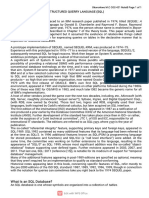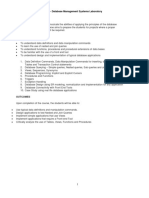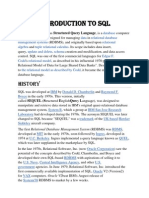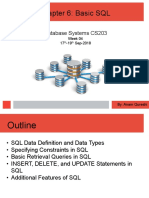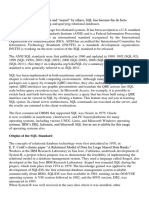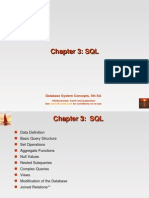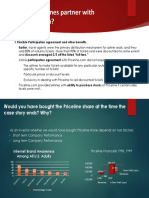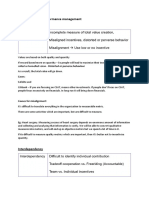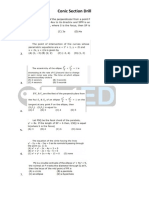0% found this document useful (0 votes)
89 views35 pagesSQL Basics and History Guide
The document outlines the basics of SQL including its history and standardization. SQL is a declarative language used to define, query, and manipulate data in a relational database. It has evolved through several standards since the 1970s.
Uploaded by
thecoolguy96Copyright
© © All Rights Reserved
We take content rights seriously. If you suspect this is your content, claim it here.
Available Formats
Download as PDF, TXT or read online on Scribd
0% found this document useful (0 votes)
89 views35 pagesSQL Basics and History Guide
The document outlines the basics of SQL including its history and standardization. SQL is a declarative language used to define, query, and manipulate data in a relational database. It has evolved through several standards since the 1970s.
Uploaded by
thecoolguy96Copyright
© © All Rights Reserved
We take content rights seriously. If you suspect this is your content, claim it here.
Available Formats
Download as PDF, TXT or read online on Scribd
/ 35

